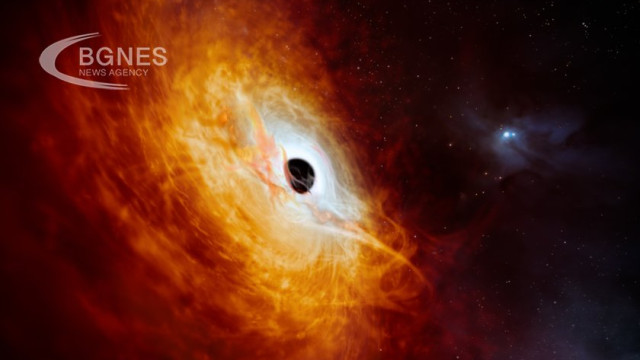Astronomers have identified the largest stellar black hole ever found in the Milky Way, with a mass 33 times that of the Sun, according to a study cited by AFP.
The black hole, named Gaia BH3, was discovered "by chance" from data collected by the European Space Agency's Gaia mission, said Pasquale Panuzzo, an astronomer at the Paris Observatory's National Centre for Scientific Research (CNRS).
The Gaia mission, which is dedicated to mapping the Milky Way galaxy, located BH3 2,000 light-years from Earth in the constellation Aquila.
Because Gaia's telescope can give the exact position of stars in the sky, astronomers were able to describe their orbits and measure the mass of the star's invisible companion - 33 times that of the Sun.
Further observations from ground-based telescopes confirmed that it was a black hole with a mass much greater than the stellar black holes already found in the Milky Way.
"No one expected to find a high-mass black hole hiding nearby, undetected until now. This is a once-in-a-explorer's-lifetime discovery," Panuzzo said in a press release.
The stellar black hole was discovered when scientists noticed a "wobbling" motion of the companion star orbiting it.
"We saw a star slightly smaller than the Sun (about 75 percent of its mass) and brighter orbiting an invisible companion," Panuzzo said.
Stellar black holes are created by the collapse of massive stars at the end of their lives and are smaller than supermassive black holes, whose creation is still unknown.
Such giants have already been detected in distant galaxies by gravitational waves.
But "never in ours," Panuzzo says.
BH3 is a "sleeping" black hole and is too far from its companion star to strip it of its matter, and therefore emits no X-rays - making it difficult to detect.
The Gaia telescope has identified the first two inactive black holes (Gaia BH1 and Gaia BH2) in the Milky Way.
Over the past 10 years, Gaia has been working at 1.5 million kilometers from Earth and in 2022 it presented a 3D map of the positions and motions of more than 1.8 billion stars. / BGNES







